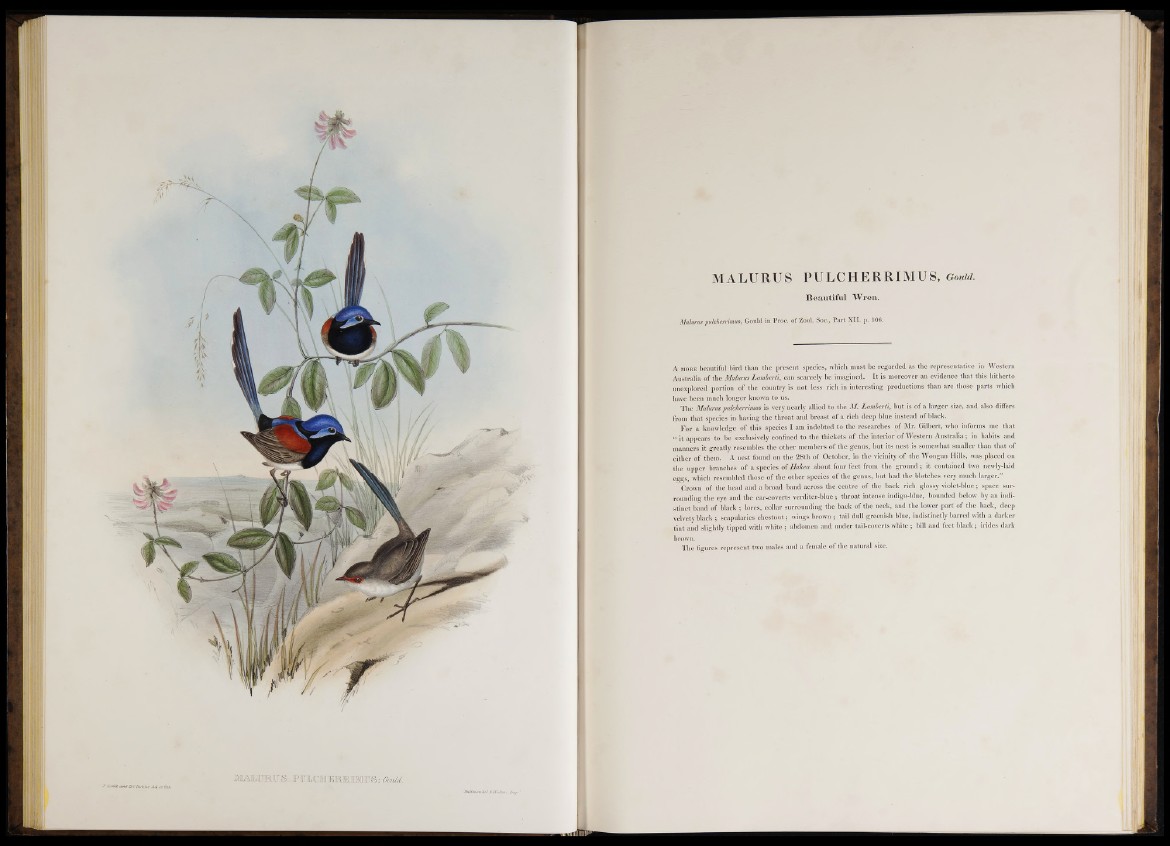
dm .
MALURUS PULCHERRIMUS , Gould.
Beautiful Wren.
Malurus pulcherrimus, Gould in Proc. of Zool. Soc., Part XII. p. 106.
A m o r e beautiful bird than the present species, which must be regarded as the representative in Western
Australia of the Malurus Lamberti, can scarcely be imagined. It is moreover an evidence that this hitherto
unexplored portion of the country is not less rich in interesting productions than are those parts which
have been much longer known to us.
The Malurus pulcherrimus is very nearly allied to the M. Lamberti, but is o f a larger size, and also differs
from that species in having the throat and breast of a rich deep blue instead o f black.
For a knowledge of this species I am indebted to the researches o f Mr. Gilbert, who informs me that
“ it appears to be exclusively confined to the thickets o f the interior o f Western Australia; in habits and
manners it greatly resembles the other members o f the genus, but its nest is somewhat smaller than that of
either of them. A nest found on the 28th o f October, in the vicinity of the Wongan Hills, was placed on
the upper branches o f a species of Hakea about four feet from the ground ; it contained two newly-laid
eggs, which resembled those o f the Other species o f the genus, but had the blotches very much larger.”
Crown of the head and a broad band across the centre o f the back rich glossy violet-blue ; space surrounding
the eye and the ear-coverts verditer-hlue ; throat intense indigo-blue, bounded below by an indistinct
band of black ; lores, collar surrounding the back of the neck, and the lower part' of the back, deep
velvety black ; scapularies chestnut; wings brown ; tail dull greenish blue, indistinctly barred with a darker
tint and slightly tipped with white ; abdomen and under tail-coverts white ; bill and feet black; irides dark
brown.
The figures represent two males and a female of the natural size.